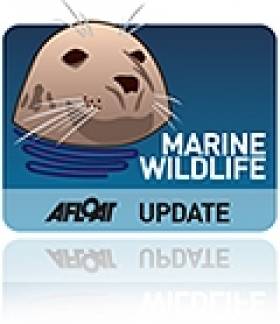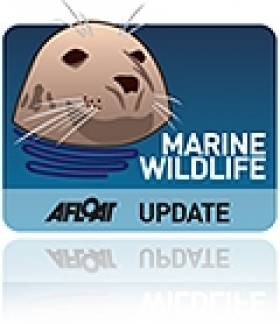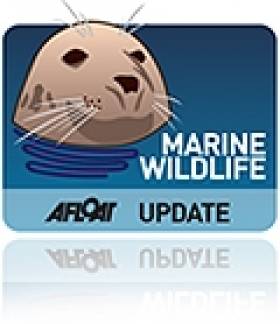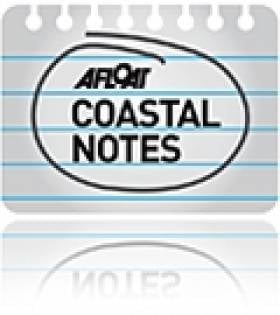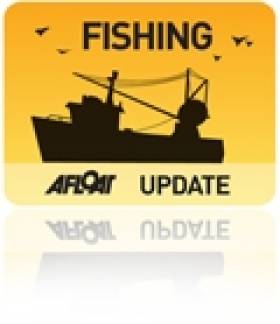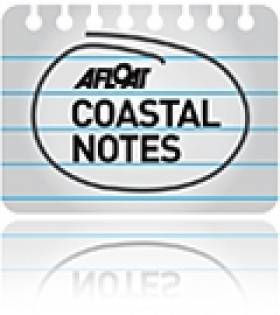Displaying items by tag: Protection
Sun Protection Advice for Sailors
#sunprotection – Sailors and boaters are constantly outdoors pursuing their sport, so it is essential they are aware of the great increase in melanoma and skin cancer due to exposure to the sun's radiation.
They need to taking the most appropriate precautions to avoid getting skin diseases such as melanoma or skin cancer which can be fatal.
Leading dermatologist, Dr Patrick Ormond, a Board Member of the Irish Skin Foundation and a leading Consultant Dermatologist in St James Hospital, Dublin writes here about how the skin and the sun interact, and offers practical sensible advice is to be given on how to protect their skin in the sun.
The skin and the sun
The skin is the interface between the self and the environment, and as such protects us from many of the outside world's insults. One of the most important functions of the skin is protection from the sun's radiation. As the force of evolution pushed humans to become a relatively hairless organism, our skin had to develop strategies to protect our DNA from the damaging ultraviolet rays of the sun. Melanin is the primary protective mechanism used by the skin to protect. There are two types of melanin – eumelanin and phaeomelanin. The latter is far less effective in photo protection, but the mixture of these two types of melanin that has resulted in the diversity of human colour and, subsequently, an individual's ability to protect itself from UV radiation.
A person's skin type is important in advising on sun protection methods. Paler, fairer skin needs more protection that darker skin. Other visual clues include hair – red/fair hair, colour of eyes – blue/green, and presence of the freckles. All these indicate increased risk.
Ultraviolet radiation
Ultraviolet radiation (UVR) from the sun damages the skin. There are two types of UV radiation that affect the skin – UVA and UVB. UVR varies with the time of day, season, latitude and altitude, and is higher in the middle of the day, in the summer months, proximity to the equator, and further away from sea level.
Avoiding sun exposure when the radiation levels area at their highest – the middle of day between 11and 3, and particularly between May to September in Ireland.
If your shadow is shorter than you are tall, seek the shade. Be aware of reflection off water, sand and snow.
Don't forget the nearer to the sun, the more intense the radiation,due to loss of atmospheric diffraction filtering. Mountain climbing, skiing and other high altitude activities all need to be sun aware.
Be aware that on a cloudy day, up to 80% of the sun's radiation can penetrate through, and that UVA can penetrate glass.
The sun and skin cancer
UVB has been strongly associated with the development of many forms of skin cancer, including the three most common – basal cell carcinoma, squamous cell carcinoma and malignant melanoma. UVA penetrates deeper into the skin and has been long associated with premature aging of the skin, but its vital role in carcinogenesis of the skin has been recognised more recently.
Sun damage can be either acute or chronic. Malignant melanoma is strongly associated with acute sun damage. Reducing melanoma risk is about avoiding sun burning and sun bathing. Chronic sun damage has been associated with all forms of skin cancer. Minimising the risk from all types of skin cancer is about reducing total sun exposure over a lifetime.
Avoid sun burning and sunbathing.
You can't avoid the sun, but you can reduce the amount you get.
Sun behaviour
In Ireland, public awareness of the damage the sun can do to your skin has increased greatly over the last few decades. People's behaviour in the sun and more specifically their sun protection behaviour has improved. In practice most will use some form of "sun protection" strategy while on holiday abroad, commonly the use of a sun protection factor ( SPF). However the use of an SPF should be only one of a number of measures used. There is a perception that using an SPF allows one to sun bathe "guilt free". This is not the case. A tan simply shows the skin has been damaged.
The sun in Ireland is also the same sun as in Spain, but many of us forget to use sun protection/reduction behaviour on an everyday basis. This is slowly changing, particularly in the context of preventing skin aging.
There is no such thing as a safe tan.
It's the same sun here as on holiday.
How sun protection factors work
Sunscreens work by reflecting, absorbing or scattering the sun's radiation. Most sunscreens contain a mixture of compounds and work by a combination of these methods. Some contain chemicals that either interact with the skin to reduce the damage inflicted by UVR on the skin, or reduce the degradation of the photo protective compounds by the UVR. Modern sunscreens have changed, and most have both UVB and UVA protection levels. They both have slightly different methods of quantifying and declaring the protection level offered. The "SPF factor" refers to the UVB protection. The SPF number indicates the length of time taken to burn using that factor. SPF15 – in laboratory conditions, would increase the time taken to burn by a factor of 15. In other words, for a person whose non sun exposed skin would normally burn in 10 minutes, then using SPF15 correctly, it would take 150 minutes to burn. UVA protection is beginning to be standardised, and the most commonly used rating systems are either a "star" rate or low/medium/high protection level.
Sunscreens have an expiry date – usually retaining their original strength three years from manufacture. Sunscreens will degrade in sunlight, and extremes of temperature. Although correct usage of a sunscreen would make it unlikely that a bottle would not be used in a short time, in reality many people under apply sunscreens, use and store them in hot environments and subsequently may not retain their efficacy.
Use a sunscreen with both UVA and UVB protection.
Make sure it is in date.
The use of sun protection factor
Studies have shown that in real life, as opposed to laboratory conditions, most people apply sunscreens incorrectly. We apply between 25 – 50% of the recommended amount, effectively reducing the protection factor by 40 – 70%. We sweat off the sunscreen and there is a variable degree of photo degradation of the sunscreen whilst out in the sun. Sunscreens need to be applied liberally and frequently. Most dermatologist have difficulty reconciling with "once a day" sunscreens as a result. In my opinion the only reliable "once a day sunscreen" is what is commonly called a tent.
A guide to the correct amount to use is" a teaspoon to the face, and a shot glass to the body". Many will not use this amount, and is why most dermatologists advocate using factor 30 or greater. - it allows for a degree of " diluting" the level of protection. SPF number and the amount of UV screened out is not a linear relationship – the difference in amount of protection offered by SPF5 and SPF 15 is much larger than the difference between SPF15 and SPF50.
Apply a sunscreen of factor 30 or higher. Apply to dry skin, at least 15 minutes before being exposed to the sun
Generously coat any areas of skin that are not covered and reapply every two hours, or more frequently if swimming/exercising/towelling.
A water resistant formulation is preferred, as it won't be sweated off as easily, but remember there is no such thing as a waterproof sunscreen. Nor is there such a thing as a 100% total sun block.
Even though you are using SPF30 – it does not mean you can stay out in the sun 30 times longer!
Formulations of sunscreen
The range of sunscreens has greatly improved, and many formulations are available with a variety of practical and cosmetic acceptability. Micro-particles have reduced the "white mask" appearance, most commonly associated with titanium dioxide and Zinc oxide, particularly for those used on the face. Creams are more acceptable on the face or on dry skin, whilst sticks are useful for around the eyes and on the lips. Gels and mousses are good for hair bearing areas such as the scalp or male chest, and sprays are particularly useful for balding scalps.
Sprays are also useful for children – easy to apply, but there is still some improvement needed in standardisation of these formulations, and knowing the amount to apply can be difficult. Sunscreens can be used over the age of 6 months, and there are special sunscreens, containing predominantly Zinc oxide or titanium dioxide, which are less likely to irritate sensitive skin. Avoid exposing babies less than 6 months, and instead use shade, clothing etc as protection.
Summary of advice
Be sensible in the sun
Stay out of the sun if possible, most particularly when the radiation levels are high – 11 to 3, May to September.
Short shadow - Seek the shade
Cover up with clothing as much as possible – long sleeves, long trousers
Wear a wide brimmed hat and wrap around sunglasses
Apply sunscreen to any areas of exposed skin – factor 30 or higher, apply generously and frequently
Water Users Speak Out Over UK Marine Conservation Proposals
#MARINE WILDLIFE - Sailors, fishermen and SCUBA divers in England's West Country could face "tough new restrictions" if plans for conservation zones in the Irish Sea and around the UK coast go ahead.
According to This Is Cornwall, groups representing water users argue that marine protection plans "would have severe knock-on effects on those who rely on the south west's coastline for employment and leisure".
Alana Murphy of the Royal Yachting Association said: "A lot of the small inshore areas proposed as conservation zones coincide with estuaries and bays that are used by sailors for mooring, or for laying buoys for racing. We are concerned we could lose important sailing areas."
Companies involved in offshore renewable energy have voiced their concerns on the impact of marine reserved on their development, while the National Federation of Fishermen's Organisations added that the scale of proposed fishing reserves was too great, and could potentially push commercial fishermen "to other areas which will then get overfished".
As previously reported on Afloat.ie, the UK's Wildlife Trusts have expressed dismay that plans to establish Marine Conservation Zones in the Irish Sea and elsewhere have been shelved till at least next year after pressure from fishermen, boaters and other groups.
Northern Ireland Marine Bill Discussed at Special Workshop
#MARINE WILDLIFE - A meeting of the Northern Ireland Marine Task Force (NIMTF) last week brought together interests from across the spectrum to discuss the new Marine Bill and ensure it will "deliver for all sea users".
The workshop at Castle Espie on Strangford Lough last Thursday 22 March saw politicians sit down with environmentalists, fishermen and wind farm developers, and engage with those responsible for drafting the proposed legislation.
According to a statement from the Ulster Wildlife Trust, which is a member of the NIMTF, the bill "provides for the creation of a network of marine protected areas to protect marine wildlife" as well as a roadmap for a more joined-up approach to the North's marine resources.
NIMTF spokesperson Ricky Devlin said: "We now need to ensure that [the bill] addresses the full range of environmental, recreational and commercial interests such as fishing, diving, electricity generation and aquaculture."
A full report of the meeting will be available shortly from www.nimtf.org
Ireland Could Join Effort to Battle Somali Pirates
#NAVAL SERVICE - Ireland could soon join the fight against Somali pirates in the Indian Ocean, the Irish Independent reports.
Minister of State Fergus O'Dowd confirmed that the Department of Defence was considering sending a personnel detachment to assist the EU's naval mission in the area west of Africa.
The region has been blighted by pirate attacks on merchant vessels and pleasure cruisers for a number of years.
Most recently, as reported on Afloat.ie, the situation prompted an interruption to the Volvo Ocean Race - with the six yachts shipped on a secret route to the United Arab Emirates under armed guard.
Ireland's potential contribution to the EU's Operation Atalanta is known as an autonomous vessel protection detachment (AVPD), and would be used to protect the likes of food aid ships from the World Food Programme that sail without a naval escort.
The Irish Independent has more on the story HERE.
NI Faces Big Fine Over Horse Mussels
#MARINE WILDLIFE - Northern Ireland faces a whopping £8 million (€9.6 million) fine from the EU over its failure to protect horse mussels.
According to BBC News, "little has been done" to protect horse mussel reefs in Strangford Lough despite promises from two government departments as far back as six years ago.
Last year Afloat.ie reported on a study from Queen's University Belfast that revealed the extent of damage to horse mussel reefs in the lough by fishing activity.
Strangford Lough is officially protected as a Special Conservation Area and a Marine Nature Reserve, as well as an Area of Special Scientfic Interest, but as BBC News states, "in reality there has been little protection put in place".
Horse mussels are pivotal to the lough's ecosystem, as some 100 other species rely on the reefs formed by the mussels in the seabed for their habitat.
NI officials now have just a few months to persuade the European Commission that they are taking strong action to protect the species, otherwise they will be charged with breaking EU directives.
BBC News has more on the story HERE.
Irish Sea Conservation Zones Shelved Till 2013
#MARINE WILDLIFE - Some 14 Marine Conservation Zones in the Irish Sea are among the network of planned marine wildlife sanctuaries around the UK that has been postponed.
The Liverpool Echo reports that the UK Department for the Environment, Food and Rural Affairs (Defra) has shelved plans to create the conservation areas by the end of 2012 after pressure from "groups that use the coastline frequently including fishermen, yachting enthusiasts and seaside villagers".
There will now be a six-month delay while and impact assessment on the network of well over 100 proposed sites is presented to the British government.
As previously reported on Afloat.ie, conservation groups have raised concerns that fewer than a quarter of the proposed sites around the UK will receive official protection.
Wexford Club Honoured in Coastcare Merit Awards
Wexford Sub Aqua Club has been recognised for its commitment to the environment in an awards ceremony in Dublin last week.
The Wexford People reports that Minister of State Fergus O'Dowd presented the club with An Taisce's Coastguard Initiative of the Year Award for its work in cleaning up the beaches and waters around Kilmore Quay.
The club was one of many organisations and volunteers throughout Ireland recognised by An Taisce's Coastcare Merit Awards.
Among them were the Portmarnock Community Coastcare Group and Malahide resident Philip Lynch, who was rewarded for his efforts in protecting the north Dublin town's coastline.
Following inspection of the vessel's papers, the vessel was detained and was escorted to Rosslare at approximately 1am on the morning of Friday 5th August. Sea-Fisheries Protection Officers undertook an investigation and valuation of the catch and fishing gears onboard the vessel. Legal proceedings involving An Garda Siochana and the SFPA were initiated on the 5th August in Rosslare against the Master of the vessel.
Peter Whelan, Chairman of the SFPA said: "The illegal landing of fish only serves to depress the price the legitimate fisherman should be achieving for fish. It also distorts the markets and only serves to benefit those involved in illegal fishing activity. Licensing and authorisation of fishing vessels is a basic perquisite of EU and Irish law. The role of the SFPA supports profitable, sustainable, managed fisheries at a time when the fishing industry faces many challenges. Effective monitoring and control systems safe-guards the good reputation of Irish food producers in the international marketplace and protects Irish taxpayer from the threat of large fines being imposed when non-compliances with the Common Fisheries Policy are encountered."
Schoolkids Urge Stormont to Save NI's Coastline
Hundreds of schoolchildren protested at Stormont last week to call for new laws to protect Northern Ireland's coastal waters, the Belfast Telegraph reports.
The group handed a petition with 4,000 signatures to Environment Minister Alex Attwood urging the introduction of a Marine Bill which would provide special marine conservation zones and restrict harmful maritime activities.
At present, Northern Ireland is the only part of the UK with no legal safeguards for the protection of its coastline.
The Northern Ireland Marine Task Force, which is heading the campaign, says "over-reaching legislation" is needed to preserve the North's marine wildlife and plantlife habitats.
The Belfast Telegraph has more in the story HERE.
Irish Bass Group Chair Gives Praise to 'Wolf of the Sea'
The chairman of the Irish Bass Group gave his praise to the fish described as the 'wolf of the sea' at a recent angling awards day.
John Quinlan told his audience at the Irish Specimen Fish Committee awards that Ireland has "something truly unique" in a marine fish that is reserved for recreational angling.
He also noted that "in spite of 21 years of bass protection, we have never felt secure enough to build the type of industry that this unique opportunity should justify."
Quinlan explained how bass play "a vital role" in the biodiversity of our inland waters, highlighting the interdependence between bass and sea birds.
“There are still magic days to be had bass fishing," he said, adding his belief that "anglers have a right to be involved in the management of our bass stocks".
He continued: "We have looked after them very well over the last 21 years and earned the right to be involved in any decisions about how they should be managed in the future. If we are to be successful we need to be taken more seriously by our Government."
Quinlan pointed to the potential benefits of angling tourism, an area that "has been lacking for far too long".
“The French call bass ‘loupe de mer’ or ‘the wolf of the sea’," he added. "These beautiful fish have hunted in our waters for centuries and I hope they continue to do so for many years to come.”
The Irish Times has more on the story HERE.





























